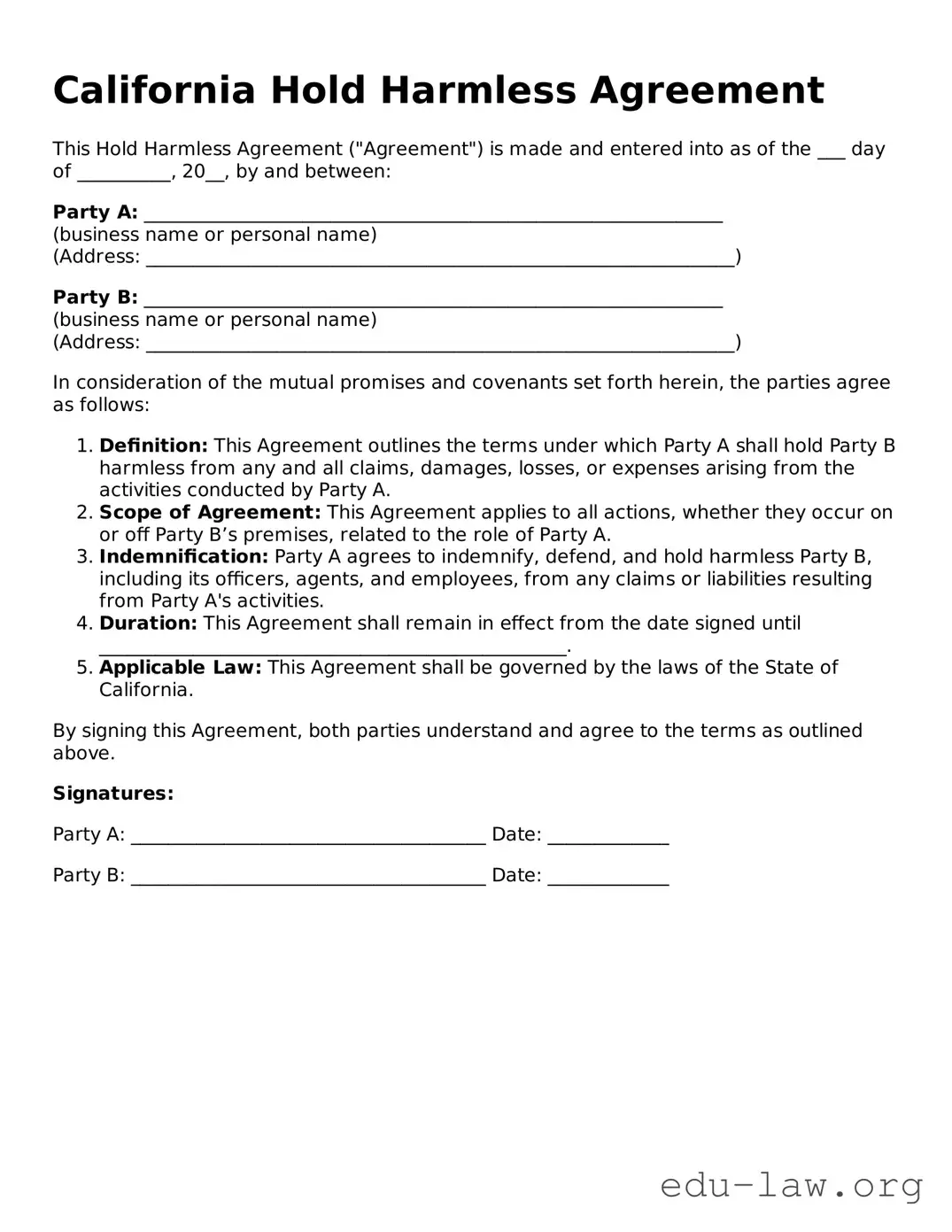California Hold Harmless Agreement
This Hold Harmless Agreement ("Agreement") is made and entered into as of the ___ day of __________, 20__, by and between:
Party A: ______________________________________________________________
(business name or personal name)
(Address: _______________________________________________________________)
Party B: ______________________________________________________________
(business name or personal name)
(Address: _______________________________________________________________)
In consideration of the mutual promises and covenants set forth herein, the parties agree as follows:
- Definition: This Agreement outlines the terms under which Party A shall hold Party B harmless from any and all claims, damages, losses, or expenses arising from the activities conducted by Party A.
- Scope of Agreement: This Agreement applies to all actions, whether they occur on or off Party B’s premises, related to the role of Party A.
- Indemnification: Party A agrees to indemnify, defend, and hold harmless Party B, including its officers, agents, and employees, from any claims or liabilities resulting from Party A's activities.
- Duration: This Agreement shall remain in effect from the date signed until __________________________________________________.
- Applicable Law: This Agreement shall be governed by the laws of the State of California.
By signing this Agreement, both parties understand and agree to the terms as outlined above.
Signatures:
Party A: ______________________________________ Date: _____________
Party B: ______________________________________ Date: _____________
